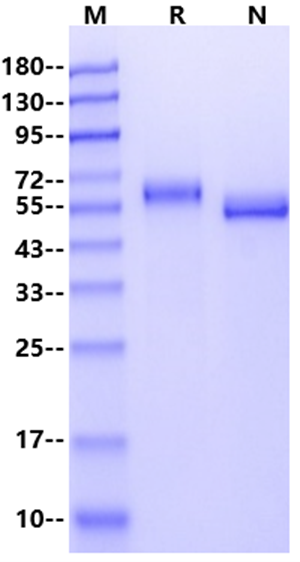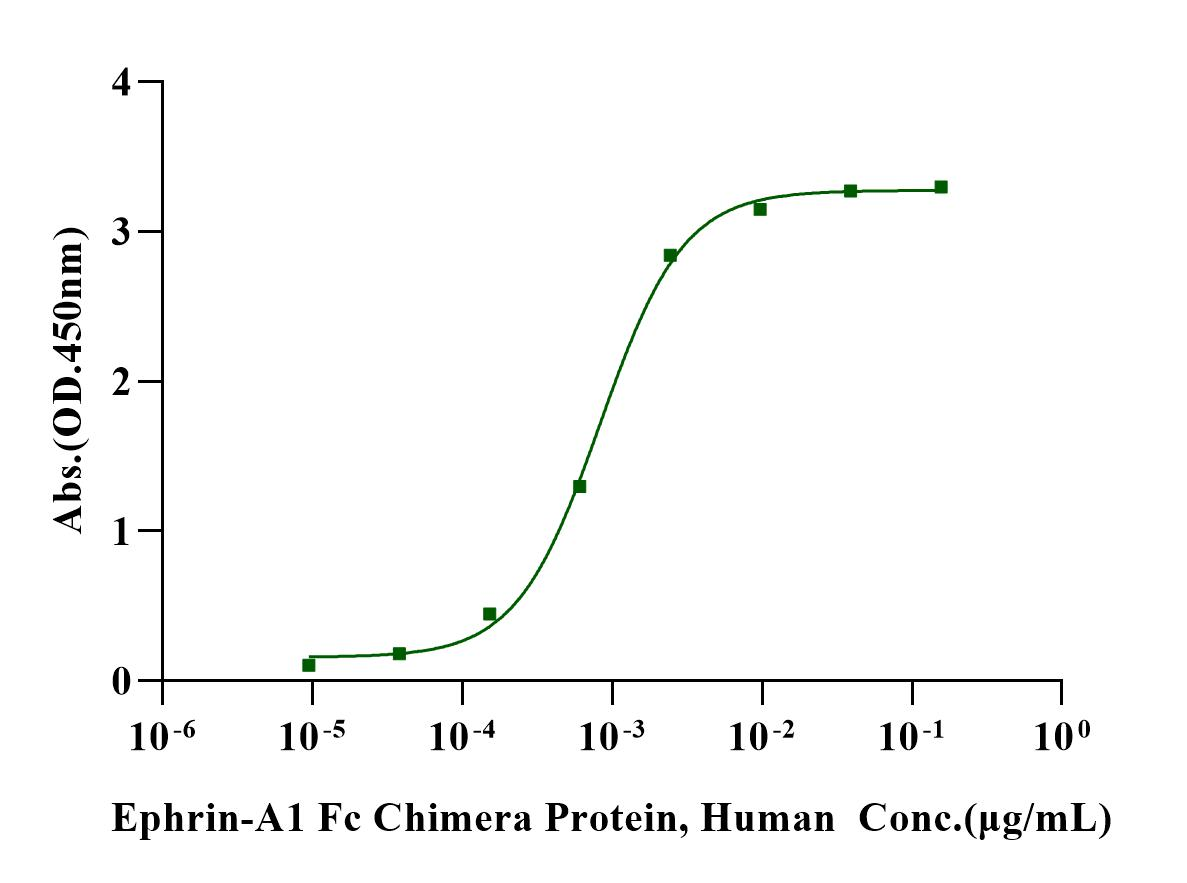Ala24-Val537, with C-terminal 10*His Tag AQGKEVVLLDFAAAGGELGWLTHPYGKGWDLMQNIMNDMPIYMYSVCNVMSGDQDNWLRTNWVYRGEAERIFIELKFTVRDCNSFPGGASSCKETFNLYYAESDLDYGTNFQKRLFTKIDTIAPDEITVSSDFEARHVKLNVEERSVGPLTRKGFYLAFQDIGACVALLSVRVYYKKCPELLQGLAHFPETIAGSDAPSLATVAGTCVDHAVVPPGGEEPRMHCAVDGEWLVPIGQCLCQAGYEKVEDACQACSPGFFKFEASESPCLECPEHTLPSPEGATSCECEEGFFRAPQDPASMPCTRPPSAPHYLTAVGMGAKVELRWTPPQDSGGREDIVYSVTCEQCWPESGECGPCEASVRYSEPPHGLTRTSVTVSDLEPHMNYTFTVEARNGVSGLVTSRSFRTASVSINQTEPPKVRLEGRSTTSLSVSWSIPPPQQSRVWKYEVTYRKKGDSNSYNVRRTEGFSVTLDDLAPDTTYLVQVQALTQEGQGAGSKVHEFQTLSPEGSGNLAVGGGSGGGSHHHHHHHHHH
55-70kDa
PBS, pH7.4
Reconstitute at 0.1-1 mg/ml according to the size in ultrapure water after rapid centrifugation.
· 12 months from date of receipt, lyophilized powder stored at -20 to -80℃.
· 3 months, -20 to -80℃ under sterile conditions after reconstitution.
· 1 week, 2 to 8℃ under sterile conditions after reconstitution.
· Please avoid repeated freeze-thaw cycles.
1. Ping Zhao. EphA2: A promising therapeutic target in breast cancer. J Genet Genomics. 2021 Apr 20;48(4):261-267. Epub 2021 Mar 29.
Ephrin type-A receptor 2 (EphA2), a receptor tyrosine kinase, is overexpressed in human breast cancers often linked to poor patient prognosis. Accumulating evidence demonstrates that EphA2 plays important roles in several critical processes associated with malignant breast progression, such as proliferation, survival, migration, invasion, drug resistance, metastasis, and angiogenesis. As its inhibition through multiple approaches can inhibit the growth of breast cancer and restore drug sensitivity, EphA2 has become a promising therapeutic target for breast cancer treatment.

1μg (R: reducing condition, N: non-reducing condition).

Immobilized EphA2 His Tag, Human (Cat. No. UA010580) at 2μg/mL (100μL/well) can bind Ephrin-A1 Fc Chimera Protein, Human (Cat. No. UA011030) with EC50 of 0.70-1.00 ng/ml.